-
EXECUTIVE SUMMARY
-
Market Overview
-
Key Findings
-
Market Segmentation
-
Competitive Landscape
-
Challenges and Opportunities
-
Future Outlook
-
MARKET INTRODUCTION
-
Definition
-
Scope of the study
- Research Objective
- Assumption
- Limitations
-
RESEARCH METHODOLOGY
-
Overview
-
Data Mining
-
Secondary Research
-
Primary Research
- Primary Interviews and Information Gathering Process
- Breakdown of Primary Respondents
-
Forecasting Model
-
Market Size Estimation
- Bottom-Up Approach
- Top-Down Approach
-
Data Triangulation
-
Validation
-
MARKET DYNAMICS
-
Overview
-
Drivers
-
Restraints
-
Opportunities
-
MARKET FACTOR ANALYSIS
-
Value chain Analysis
-
Porter's Five Forces Analysis
- Bargaining Power of Suppliers
- Bargaining Power of Buyers
- Threat of New Entrants
- Threat of Substitutes
- Intensity of Rivalry
-
COVID-19 Impact Analysis
- Market Impact Analysis
- Regional Impact
- Opportunity and Threat Analysis
-
AUTOMOTIVE AFTERMARKET MARKET, BY PRODUCT TYPE (USD BILLION)
-
Parts
-
Accessories
-
Tires
-
Lubricants
-
Service Equipment
-
AUTOMOTIVE AFTERMARKET MARKET, BY SALES CHANNEL (USD BILLION)
-
Online
-
Offline Retail
-
Wholesale
-
Direct Sales
-
AUTOMOTIVE AFTERMARKET MARKET, BY VEHICLE TYPE (USD BILLION)
-
Passenger Cars
-
Commercial Vehicles
-
Motorcycles
-
Heavy-Duty Vehicles
-
AUTOMOTIVE AFTERMARKET MARKET, BY SERVICE TYPE (USD BILLION)
-
Maintenance Services
-
Repair Services
-
Installation Services
-
Modification Services
-
AUTOMOTIVE AFTERMARKET MARKET, BY REGIONAL (USD BILLION)
-
North America
- US
- Canada
-
Europe
- Germany
- UK
- France
- Russia
- Italy
- Spain
- Rest of Europe
-
APAC
- China
- India
- Japan
- South Korea
- Malaysia
- Thailand
- Indonesia
- Rest of APAC
-
South America
- Brazil
- Mexico
- Argentina
- Rest of South America
-
MEA
- GCC Countries
- South Africa
- Rest of MEA
-
COMPETITIVE LANDSCAPE
-
Overview
-
Competitive Analysis
-
Market share Analysis
-
Major Growth Strategy in the Automotive Aftermarket Market
-
Competitive Benchmarking
-
Leading Players in Terms of Number of Developments in the Automotive Aftermarket Market
-
Key developments and growth strategies
- New Product Launch/Service Deployment
- Merger & Acquisitions
- Joint Ventures
-
Major Players Financial Matrix
- Sales and Operating Income
- Major Players R&D Expenditure. 2023
-
COMPANY PROFILES
-
Denso
- Financial Overview
- Products Offered
- Key Developments
- SWOT Analysis
- Key Strategies
-
Magna International
- Financial Overview
- Products Offered
- Key Developments
- SWOT Analysis
- Key Strategies
-
GKN Automotive
- Financial Overview
- Products Offered
- Key Developments
- SWOT Analysis
- Key Strategies
-
Valeo
- Financial Overview
- Products Offered
- Key Developments
- SWOT Analysis
- Key Strategies
-
Aisin Seiki
- Financial Overview
- Products Offered
- Key Developments
- SWOT Analysis
- Key Strategies
-
Faurecia
- Financial Overview
- Products Offered
- Key Developments
- SWOT Analysis
- Key Strategies
-
ZF Friedrichshafen
- Financial Overview
- Products Offered
- Key Developments
- SWOT Analysis
- Key Strategies
-
Mann+Hummel
- Financial Overview
- Products Offered
- Key Developments
- SWOT Analysis
- Key Strategies
-
Hella
- Financial Overview
- Products Offered
- Key Developments
- SWOT Analysis
- Key Strategies
-
Delphi Technologies
- Financial Overview
- Products Offered
- Key Developments
- SWOT Analysis
- Key Strategies
-
Tenneco
- Financial Overview
- Products Offered
- Key Developments
- SWOT Analysis
- Key Strategies
-
FederalMogul
- Financial Overview
- Products Offered
- Key Developments
- SWOT Analysis
- Key Strategies
-
NGK Spark Plug
- Financial Overview
- Products Offered
- Key Developments
- SWOT Analysis
- Key Strategies
-
Continental AG
- Financial Overview
- Products Offered
- Key Developments
- SWOT Analysis
- Key Strategies
-
Bosch
- Financial Overview
- Products Offered
- Key Developments
- SWOT Analysis
- Key Strategies
-
APPENDIX
-
References
-
Related Reports
-
LIST OF TABLES
-
LIST OF ASSUMPTIONS
-
NORTH AMERICA AUTOMOTIVE AFTERMARKET MARKET SIZE ESTIMATES & FORECAST, BY PRODUCT TYPE, 2019-2035 (USD BILLIONS)
-
NORTH AMERICA AUTOMOTIVE AFTERMARKET MARKET SIZE ESTIMATES & FORECAST, BY SALES CHANNEL, 2019-2035 (USD BILLIONS)
-
NORTH AMERICA AUTOMOTIVE AFTERMARKET MARKET SIZE ESTIMATES & FORECAST, BY VEHICLE TYPE, 2019-2035 (USD BILLIONS)
-
NORTH AMERICA AUTOMOTIVE AFTERMARKET MARKET SIZE ESTIMATES & FORECAST, BY SERVICE TYPE, 2019-2035 (USD BILLIONS)
-
NORTH AMERICA AUTOMOTIVE AFTERMARKET MARKET SIZE ESTIMATES & FORECAST, BY REGIONAL, 2019-2035 (USD BILLIONS)
-
US AUTOMOTIVE AFTERMARKET MARKET SIZE ESTIMATES & FORECAST, BY PRODUCT TYPE, 2019-2035 (USD BILLIONS)
-
US AUTOMOTIVE AFTERMARKET MARKET SIZE ESTIMATES & FORECAST, BY SALES CHANNEL, 2019-2035 (USD BILLIONS)
-
US AUTOMOTIVE AFTERMARKET MARKET SIZE ESTIMATES & FORECAST, BY VEHICLE TYPE, 2019-2035 (USD BILLIONS)
-
US AUTOMOTIVE AFTERMARKET MARKET SIZE ESTIMATES & FORECAST, BY SERVICE TYPE, 2019-2035 (USD BILLIONS)
-
US AUTOMOTIVE AFTERMARKET MARKET SIZE ESTIMATES & FORECAST, BY REGIONAL, 2019-2035 (USD BILLIONS)
-
CANADA AUTOMOTIVE AFTERMARKET MARKET SIZE ESTIMATES & FORECAST, BY PRODUCT TYPE, 2019-2035 (USD BILLIONS)
-
CANADA AUTOMOTIVE AFTERMARKET MARKET SIZE ESTIMATES & FORECAST, BY SALES CHANNEL, 2019-2035 (USD BILLIONS)
-
CANADA AUTOMOTIVE AFTERMARKET MARKET SIZE ESTIMATES & FORECAST, BY VEHICLE TYPE, 2019-2035 (USD BILLIONS)
-
CANADA AUTOMOTIVE AFTERMARKET MARKET SIZE ESTIMATES & FORECAST, BY SERVICE TYPE, 2019-2035 (USD BILLIONS)
-
CANADA AUTOMOTIVE AFTERMARKET MARKET SIZE ESTIMATES & FORECAST, BY REGIONAL, 2019-2035 (USD BILLIONS)
-
EUROPE AUTOMOTIVE AFTERMARKET MARKET SIZE ESTIMATES & FORECAST, BY PRODUCT TYPE, 2019-2035 (USD BILLIONS)
-
EUROPE AUTOMOTIVE AFTERMARKET MARKET SIZE ESTIMATES & FORECAST, BY SALES CHANNEL, 2019-2035 (USD BILLIONS)
-
EUROPE AUTOMOTIVE AFTERMARKET MARKET SIZE ESTIMATES & FORECAST, BY VEHICLE TYPE, 2019-2035 (USD BILLIONS)
-
EUROPE AUTOMOTIVE AFTERMARKET MARKET SIZE ESTIMATES & FORECAST, BY SERVICE TYPE, 2019-2035 (USD BILLIONS)
-
EUROPE AUTOMOTIVE AFTERMARKET MARKET SIZE ESTIMATES & FORECAST, BY REGIONAL, 2019-2035 (USD BILLIONS)
-
GERMANY AUTOMOTIVE AFTERMARKET MARKET SIZE ESTIMATES & FORECAST, BY PRODUCT TYPE, 2019-2035 (USD BILLIONS)
-
GERMANY AUTOMOTIVE AFTERMARKET MARKET SIZE ESTIMATES & FORECAST, BY SALES CHANNEL, 2019-2035 (USD BILLIONS)
-
GERMANY AUTOMOTIVE AFTERMARKET MARKET SIZE ESTIMATES & FORECAST, BY VEHICLE TYPE, 2019-2035 (USD BILLIONS)
-
GERMANY AUTOMOTIVE AFTERMARKET MARKET SIZE ESTIMATES & FORECAST, BY SERVICE TYPE, 2019-2035 (USD BILLIONS)
-
GERMANY AUTOMOTIVE AFTERMARKET MARKET SIZE ESTIMATES & FORECAST, BY REGIONAL, 2019-2035 (USD BILLIONS)
-
UK AUTOMOTIVE AFTERMARKET MARKET SIZE ESTIMATES & FORECAST, BY PRODUCT TYPE, 2019-2035 (USD BILLIONS)
-
UK AUTOMOTIVE AFTERMARKET MARKET SIZE ESTIMATES & FORECAST, BY SALES CHANNEL, 2019-2035 (USD BILLIONS)
-
UK AUTOMOTIVE AFTERMARKET MARKET SIZE ESTIMATES & FORECAST, BY VEHICLE TYPE, 2019-2035 (USD BILLIONS)
-
UK AUTOMOTIVE AFTERMARKET MARKET SIZE ESTIMATES & FORECAST, BY SERVICE TYPE, 2019-2035 (USD BILLIONS)
-
UK AUTOMOTIVE AFTERMARKET MARKET SIZE ESTIMATES & FORECAST, BY REGIONAL, 2019-2035 (USD BILLIONS)
-
FRANCE AUTOMOTIVE AFTERMARKET MARKET SIZE ESTIMATES & FORECAST, BY PRODUCT TYPE, 2019-2035 (USD BILLIONS)
-
FRANCE AUTOMOTIVE AFTERMARKET MARKET SIZE ESTIMATES & FORECAST, BY SALES CHANNEL, 2019-2035 (USD BILLIONS)
-
FRANCE AUTOMOTIVE AFTERMARKET MARKET SIZE ESTIMATES & FORECAST, BY VEHICLE TYPE, 2019-2035 (USD BILLIONS)
-
FRANCE AUTOMOTIVE AFTERMARKET MARKET SIZE ESTIMATES & FORECAST, BY SERVICE TYPE, 2019-2035 (USD BILLIONS)
-
FRANCE AUTOMOTIVE AFTERMARKET MARKET SIZE ESTIMATES & FORECAST, BY REGIONAL, 2019-2035 (USD BILLIONS)
-
RUSSIA AUTOMOTIVE AFTERMARKET MARKET SIZE ESTIMATES & FORECAST, BY PRODUCT TYPE, 2019-2035 (USD BILLIONS)
-
RUSSIA AUTOMOTIVE AFTERMARKET MARKET SIZE ESTIMATES & FORECAST, BY SALES CHANNEL, 2019-2035 (USD BILLIONS)
-
RUSSIA AUTOMOTIVE AFTERMARKET MARKET SIZE ESTIMATES & FORECAST, BY VEHICLE TYPE, 2019-2035 (USD BILLIONS)
-
RUSSIA AUTOMOTIVE AFTERMARKET MARKET SIZE ESTIMATES & FORECAST, BY SERVICE TYPE, 2019-2035 (USD BILLIONS)
-
RUSSIA AUTOMOTIVE AFTERMARKET MARKET SIZE ESTIMATES & FORECAST, BY REGIONAL, 2019-2035 (USD BILLIONS)
-
ITALY AUTOMOTIVE AFTERMARKET MARKET SIZE ESTIMATES & FORECAST, BY PRODUCT TYPE, 2019-2035 (USD BILLIONS)
-
ITALY AUTOMOTIVE AFTERMARKET MARKET SIZE ESTIMATES & FORECAST, BY SALES CHANNEL, 2019-2035 (USD BILLIONS)
-
ITALY AUTOMOTIVE AFTERMARKET MARKET SIZE ESTIMATES & FORECAST, BY VEHICLE TYPE, 2019-2035 (USD BILLIONS)
-
ITALY AUTOMOTIVE AFTERMARKET MARKET SIZE ESTIMATES & FORECAST, BY SERVICE TYPE, 2019-2035 (USD BILLIONS)
-
ITALY AUTOMOTIVE AFTERMARKET MARKET SIZE ESTIMATES & FORECAST, BY REGIONAL, 2019-2035 (USD BILLIONS)
-
SPAIN AUTOMOTIVE AFTERMARKET MARKET SIZE ESTIMATES & FORECAST, BY PRODUCT TYPE, 2019-2035 (USD BILLIONS)
-
SPAIN AUTOMOTIVE AFTERMARKET MARKET SIZE ESTIMATES & FORECAST, BY SALES CHANNEL, 2019-2035 (USD BILLIONS)
-
SPAIN AUTOMOTIVE AFTERMARKET MARKET SIZE ESTIMATES & FORECAST, BY VEHICLE TYPE, 2019-2035 (USD BILLIONS)
-
SPAIN AUTOMOTIVE AFTERMARKET MARKET SIZE ESTIMATES & FORECAST, BY SERVICE TYPE, 2019-2035 (USD BILLIONS)
-
SPAIN AUTOMOTIVE AFTERMARKET MARKET SIZE ESTIMATES & FORECAST, BY REGIONAL, 2019-2035 (USD BILLIONS)
-
REST OF EUROPE AUTOMOTIVE AFTERMARKET MARKET SIZE ESTIMATES & FORECAST, BY PRODUCT TYPE, 2019-2035 (USD BILLIONS)
-
REST OF EUROPE AUTOMOTIVE AFTERMARKET MARKET SIZE ESTIMATES & FORECAST, BY SALES CHANNEL, 2019-2035 (USD BILLIONS)
-
REST OF EUROPE AUTOMOTIVE AFTERMARKET MARKET SIZE ESTIMATES & FORECAST, BY VEHICLE TYPE, 2019-2035 (USD BILLIONS)
-
REST OF EUROPE AUTOMOTIVE AFTERMARKET MARKET SIZE ESTIMATES & FORECAST, BY SERVICE TYPE, 2019-2035 (USD BILLIONS)
-
REST OF EUROPE AUTOMOTIVE AFTERMARKET MARKET SIZE ESTIMATES & FORECAST, BY REGIONAL, 2019-2035 (USD BILLIONS)
-
APAC AUTOMOTIVE AFTERMARKET MARKET SIZE ESTIMATES & FORECAST, BY PRODUCT TYPE, 2019-2035 (USD BILLIONS)
-
APAC AUTOMOTIVE AFTERMARKET MARKET SIZE ESTIMATES & FORECAST, BY SALES CHANNEL, 2019-2035 (USD BILLIONS)
-
APAC AUTOMOTIVE AFTERMARKET MARKET SIZE ESTIMATES & FORECAST, BY VEHICLE TYPE, 2019-2035 (USD BILLIONS)
-
APAC AUTOMOTIVE AFTERMARKET MARKET SIZE ESTIMATES & FORECAST, BY SERVICE TYPE, 2019-2035 (USD BILLIONS)
-
APAC AUTOMOTIVE AFTERMARKET MARKET SIZE ESTIMATES & FORECAST, BY REGIONAL, 2019-2035 (USD BILLIONS)
-
CHINA AUTOMOTIVE AFTERMARKET MARKET SIZE ESTIMATES & FORECAST, BY PRODUCT TYPE, 2019-2035 (USD BILLIONS)
-
CHINA AUTOMOTIVE AFTERMARKET MARKET SIZE ESTIMATES & FORECAST, BY SALES CHANNEL, 2019-2035 (USD BILLIONS)
-
CHINA AUTOMOTIVE AFTERMARKET MARKET SIZE ESTIMATES & FORECAST, BY VEHICLE TYPE, 2019-2035 (USD BILLIONS)
-
CHINA AUTOMOTIVE AFTERMARKET MARKET SIZE ESTIMATES & FORECAST, BY SERVICE TYPE, 2019-2035 (USD BILLIONS)
-
CHINA AUTOMOTIVE AFTERMARKET MARKET SIZE ESTIMATES & FORECAST, BY REGIONAL, 2019-2035 (USD BILLIONS)
-
INDIA AUTOMOTIVE AFTERMARKET MARKET SIZE ESTIMATES & FORECAST, BY PRODUCT TYPE, 2019-2035 (USD BILLIONS)
-
INDIA AUTOMOTIVE AFTERMARKET MARKET SIZE ESTIMATES & FORECAST, BY SALES CHANNEL, 2019-2035 (USD BILLIONS)
-
INDIA AUTOMOTIVE AFTERMARKET MARKET SIZE ESTIMATES & FORECAST, BY VEHICLE TYPE, 2019-2035 (USD BILLIONS)
-
INDIA AUTOMOTIVE AFTERMARKET MARKET SIZE ESTIMATES & FORECAST, BY SERVICE TYPE, 2019-2035 (USD BILLIONS)
-
INDIA AUTOMOTIVE AFTERMARKET MARKET SIZE ESTIMATES & FORECAST, BY REGIONAL, 2019-2035 (USD BILLIONS)
-
JAPAN AUTOMOTIVE AFTERMARKET MARKET SIZE ESTIMATES & FORECAST, BY PRODUCT TYPE, 2019-2035 (USD BILLIONS)
-
JAPAN AUTOMOTIVE AFTERMARKET MARKET SIZE ESTIMATES & FORECAST, BY SALES CHANNEL, 2019-2035 (USD BILLIONS)
-
JAPAN AUTOMOTIVE AFTERMARKET MARKET SIZE ESTIMATES & FORECAST, BY VEHICLE TYPE, 2019-2035 (USD BILLIONS)
-
JAPAN AUTOMOTIVE AFTERMARKET MARKET SIZE ESTIMATES & FORECAST, BY SERVICE TYPE, 2019-2035 (USD BILLIONS)
-
JAPAN AUTOMOTIVE AFTERMARKET MARKET SIZE ESTIMATES & FORECAST, BY REGIONAL, 2019-2035 (USD BILLIONS)
-
SOUTH KOREA AUTOMOTIVE AFTERMARKET MARKET SIZE ESTIMATES & FORECAST, BY PRODUCT TYPE, 2019-2035 (USD BILLIONS)
-
SOUTH KOREA AUTOMOTIVE AFTERMARKET MARKET SIZE ESTIMATES & FORECAST, BY SALES CHANNEL, 2019-2035 (USD BILLIONS)
-
SOUTH KOREA AUTOMOTIVE AFTERMARKET MARKET SIZE ESTIMATES & FORECAST, BY VEHICLE TYPE, 2019-2035 (USD BILLIONS)
-
SOUTH KOREA AUTOMOTIVE AFTERMARKET MARKET SIZE ESTIMATES & FORECAST, BY SERVICE TYPE, 2019-2035 (USD BILLIONS)
-
SOUTH KOREA AUTOMOTIVE AFTERMARKET MARKET SIZE ESTIMATES & FORECAST, BY REGIONAL, 2019-2035 (USD BILLIONS)
-
MALAYSIA AUTOMOTIVE AFTERMARKET MARKET SIZE ESTIMATES & FORECAST, BY PRODUCT TYPE, 2019-2035 (USD BILLIONS)
-
MALAYSIA AUTOMOTIVE AFTERMARKET MARKET SIZE ESTIMATES & FORECAST, BY SALES CHANNEL, 2019-2035 (USD BILLIONS)
-
MALAYSIA AUTOMOTIVE AFTERMARKET MARKET SIZE ESTIMATES & FORECAST, BY VEHICLE TYPE, 2019-2035 (USD BILLIONS)
-
MALAYSIA AUTOMOTIVE AFTERMARKET MARKET SIZE ESTIMATES & FORECAST, BY SERVICE TYPE, 2019-2035 (USD BILLIONS)
-
MALAYSIA AUTOMOTIVE AFTERMARKET MARKET SIZE ESTIMATES & FORECAST, BY REGIONAL, 2019-2035 (USD BILLIONS)
-
THAILAND AUTOMOTIVE AFTERMARKET MARKET SIZE ESTIMATES & FORECAST, BY PRODUCT TYPE, 2019-2035 (USD BILLIONS)
-
THAILAND AUTOMOTIVE AFTERMARKET MARKET SIZE ESTIMATES & FORECAST, BY SALES CHANNEL, 2019-2035 (USD BILLIONS)
-
THAILAND AUTOMOTIVE AFTERMARKET MARKET SIZE ESTIMATES & FORECAST, BY VEHICLE TYPE, 2019-2035 (USD BILLIONS)
-
THAILAND AUTOMOTIVE AFTERMARKET MARKET SIZE ESTIMATES & FORECAST, BY SERVICE TYPE, 2019-2035 (USD BILLIONS)
-
THAILAND AUTOMOTIVE AFTERMARKET MARKET SIZE ESTIMATES & FORECAST, BY REGIONAL, 2019-2035 (USD BILLIONS)
-
INDONESIA AUTOMOTIVE AFTERMARKET MARKET SIZE ESTIMATES & FORECAST, BY PRODUCT TYPE, 2019-2035 (USD BILLIONS)
-
INDONESIA AUTOMOTIVE AFTERMARKET MARKET SIZE ESTIMATES & FORECAST, BY SALES CHANNEL, 2019-2035 (USD BILLIONS)
-
INDONESIA AUTOMOTIVE AFTERMARKET MARKET SIZE ESTIMATES & FORECAST, BY VEHICLE TYPE, 2019-2035 (USD BILLIONS)
-
INDONESIA AUTOMOTIVE AFTERMARKET MARKET SIZE ESTIMATES & FORECAST, BY SERVICE TYPE, 2019-2035 (USD BILLIONS)
-
INDONESIA AUTOMOTIVE AFTERMARKET MARKET SIZE ESTIMATES & FORECAST, BY REGIONAL, 2019-2035 (USD BILLIONS)
-
REST OF APAC AUTOMOTIVE AFTERMARKET MARKET SIZE ESTIMATES & FORECAST, BY PRODUCT TYPE, 2019-2035 (USD BILLIONS)
-
REST OF APAC AUTOMOTIVE AFTERMARKET MARKET SIZE ESTIMATES & FORECAST, BY SALES CHANNEL, 2019-2035 (USD BILLIONS)
-
REST OF APAC AUTOMOTIVE AFTERMARKET MARKET SIZE ESTIMATES & FORECAST, BY VEHICLE TYPE, 2019-2035 (USD BILLIONS)
-
REST OF APAC AUTOMOTIVE AFTERMARKET MARKET SIZE ESTIMATES & FORECAST, BY SERVICE TYPE, 2019-2035 (USD BILLIONS)
-
REST OF APAC AUTOMOTIVE AFTERMARKET MARKET SIZE ESTIMATES & FORECAST, BY REGIONAL, 2019-2035 (USD BILLIONS)
-
SOUTH AMERICA AUTOMOTIVE AFTERMARKET MARKET SIZE ESTIMATES & FORECAST, BY PRODUCT TYPE, 2019-2035 (USD BILLIONS)
-
SOUTH AMERICA AUTOMOTIVE AFTERMARKET MARKET SIZE ESTIMATES & FORECAST, BY SALES CHANNEL, 2019-2035 (USD BILLIONS)
-
SOUTH AMERICA AUTOMOTIVE AFTERMARKET MARKET SIZE ESTIMATES & FORECAST, BY VEHICLE TYPE, 2019-2035 (USD BILLIONS)
-
SOUTH AMERICA AUTOMOTIVE AFTERMARKET MARKET SIZE ESTIMATES & FORECAST, BY SERVICE TYPE, 2019-2035 (USD BILLIONS)
-
SOUTH AMERICA AUTOMOTIVE AFTERMARKET MARKET SIZE ESTIMATES & FORECAST, BY REGIONAL, 2019-2035 (USD BILLIONS)
-
BRAZIL AUTOMOTIVE AFTERMARKET MARKET SIZE ESTIMATES & FORECAST, BY PRODUCT TYPE, 2019-2035 (USD BILLIONS)
-
BRAZIL AUTOMOTIVE AFTERMARKET MARKET SIZE ESTIMATES & FORECAST, BY SALES CHANNEL, 2019-2035 (USD BILLIONS)
-
BRAZIL AUTOMOTIVE AFTERMARKET MARKET SIZE ESTIMATES & FORECAST, BY VEHICLE TYPE, 2019-2035 (USD BILLIONS)
-
BRAZIL AUTOMOTIVE AFTERMARKET MARKET SIZE ESTIMATES & FORECAST, BY SERVICE TYPE, 2019-2035 (USD BILLIONS)
-
BRAZIL AUTOMOTIVE AFTERMARKET MARKET SIZE ESTIMATES & FORECAST, BY REGIONAL, 2019-2035 (USD BILLIONS)
-
MEXICO AUTOMOTIVE AFTERMARKET MARKET SIZE ESTIMATES & FORECAST, BY PRODUCT TYPE, 2019-2035 (USD BILLIONS)
-
MEXICO AUTOMOTIVE AFTERMARKET MARKET SIZE ESTIMATES & FORECAST, BY SALES CHANNEL, 2019-2035 (USD BILLIONS)
-
MEXICO AUTOMOTIVE AFTERMARKET MARKET SIZE ESTIMATES & FORECAST, BY VEHICLE TYPE, 2019-2035 (USD BILLIONS)
-
MEXICO AUTOMOTIVE AFTERMARKET MARKET SIZE ESTIMATES & FORECAST, BY SERVICE TYPE, 2019-2035 (USD BILLIONS)
-
MEXICO AUTOMOTIVE AFTERMARKET MARKET SIZE ESTIMATES & FORECAST, BY REGIONAL, 2019-2035 (USD BILLIONS)
-
ARGENTINA AUTOMOTIVE AFTERMARKET MARKET SIZE ESTIMATES & FORECAST, BY PRODUCT TYPE, 2019-2035 (USD BILLIONS)
-
ARGENTINA AUTOMOTIVE AFTERMARKET MARKET SIZE ESTIMATES & FORECAST, BY SALES CHANNEL, 2019-2035 (USD BILLIONS)
-
ARGENTINA AUTOMOTIVE AFTERMARKET MARKET SIZE ESTIMATES & FORECAST, BY VEHICLE TYPE, 2019-2035 (USD BILLIONS)
-
ARGENTINA AUTOMOTIVE AFTERMARKET MARKET SIZE ESTIMATES & FORECAST, BY SERVICE TYPE, 2019-2035 (USD BILLIONS)
-
ARGENTINA AUTOMOTIVE AFTERMARKET MARKET SIZE ESTIMATES & FORECAST, BY REGIONAL, 2019-2035 (USD BILLIONS)
-
REST OF SOUTH AMERICA AUTOMOTIVE AFTERMARKET MARKET SIZE ESTIMATES & FORECAST, BY PRODUCT TYPE, 2019-2035 (USD BILLIONS)
-
REST OF SOUTH AMERICA AUTOMOTIVE AFTERMARKET MARKET SIZE ESTIMATES & FORECAST, BY SALES CHANNEL, 2019-2035 (USD BILLIONS)
-
REST OF SOUTH AMERICA AUTOMOTIVE AFTERMARKET MARKET SIZE ESTIMATES & FORECAST, BY VEHICLE TYPE, 2019-2035 (USD BILLIONS)
-
REST OF SOUTH AMERICA AUTOMOTIVE AFTERMARKET MARKET SIZE ESTIMATES & FORECAST, BY SERVICE TYPE, 2019-2035 (USD BILLIONS)
-
REST OF SOUTH AMERICA AUTOMOTIVE AFTERMARKET MARKET SIZE ESTIMATES & FORECAST, BY REGIONAL, 2019-2035 (USD BILLIONS)
-
MEA AUTOMOTIVE AFTERMARKET MARKET SIZE ESTIMATES & FORECAST, BY PRODUCT TYPE, 2019-2035 (USD BILLIONS)
-
MEA AUTOMOTIVE AFTERMARKET MARKET SIZE ESTIMATES & FORECAST, BY SALES CHANNEL, 2019-2035 (USD BILLIONS)
-
MEA AUTOMOTIVE AFTERMARKET MARKET SIZE ESTIMATES & FORECAST, BY VEHICLE TYPE, 2019-2035 (USD BILLIONS)
-
MEA AUTOMOTIVE AFTERMARKET MARKET SIZE ESTIMATES & FORECAST, BY SERVICE TYPE, 2019-2035 (USD BILLIONS)
-
MEA AUTOMOTIVE AFTERMARKET MARKET SIZE ESTIMATES & FORECAST, BY REGIONAL, 2019-2035 (USD BILLIONS)
-
GCC COUNTRIES AUTOMOTIVE AFTERMARKET MARKET SIZE ESTIMATES & FORECAST, BY PRODUCT TYPE, 2019-2035 (USD BILLIONS)
-
GCC COUNTRIES AUTOMOTIVE AFTERMARKET MARKET SIZE ESTIMATES & FORECAST, BY SALES CHANNEL, 2019-2035 (USD BILLIONS)
-
GCC COUNTRIES AUTOMOTIVE AFTERMARKET MARKET SIZE ESTIMATES & FORECAST, BY VEHICLE TYPE, 2019-2035 (USD BILLIONS)
-
GCC COUNTRIES AUTOMOTIVE AFTERMARKET MARKET SIZE ESTIMATES & FORECAST, BY SERVICE TYPE, 2019-2035 (USD BILLIONS)
-
GCC COUNTRIES AUTOMOTIVE AFTERMARKET MARKET SIZE ESTIMATES & FORECAST, BY REGIONAL, 2019-2035 (USD BILLIONS)
-
SOUTH AFRICA AUTOMOTIVE AFTERMARKET MARKET SIZE ESTIMATES & FORECAST, BY PRODUCT TYPE, 2019-2035 (USD BILLIONS)
-
SOUTH AFRICA AUTOMOTIVE AFTERMARKET MARKET SIZE ESTIMATES & FORECAST, BY SALES CHANNEL, 2019-2035 (USD BILLIONS)
-
SOUTH AFRICA AUTOMOTIVE AFTERMARKET MARKET SIZE ESTIMATES & FORECAST, BY VEHICLE TYPE, 2019-2035 (USD BILLIONS)
-
SOUTH AFRICA AUTOMOTIVE AFTERMARKET MARKET SIZE ESTIMATES & FORECAST, BY SERVICE TYPE, 2019-2035 (USD BILLIONS)
-
SOUTH AFRICA AUTOMOTIVE AFTERMARKET MARKET SIZE ESTIMATES & FORECAST, BY REGIONAL, 2019-2035 (USD BILLIONS)
-
REST OF MEA AUTOMOTIVE AFTERMARKET MARKET SIZE ESTIMATES & FORECAST, BY PRODUCT TYPE, 2019-2035 (USD BILLIONS)
-
REST OF MEA AUTOMOTIVE AFTERMARKET MARKET SIZE ESTIMATES & FORECAST, BY SALES CHANNEL, 2019-2035 (USD BILLIONS)
-
REST OF MEA AUTOMOTIVE AFTERMARKET MARKET SIZE ESTIMATES & FORECAST, BY VEHICLE TYPE, 2019-2035 (USD BILLIONS)
-
REST OF MEA AUTOMOTIVE AFTERMARKET MARKET SIZE ESTIMATES & FORECAST, BY SERVICE TYPE, 2019-2035 (USD BILLIONS)
-
REST OF MEA AUTOMOTIVE AFTERMARKET MARKET SIZE ESTIMATES & FORECAST, BY REGIONAL, 2019-2035 (USD BILLIONS)
-
PRODUCT LAUNCH/PRODUCT DEVELOPMENT/APPROVAL
-
ACQUISITION/PARTNERSHIP
-
LIST OF FIGURES
-
MARKET SYNOPSIS
-
NORTH AMERICA AUTOMOTIVE AFTERMARKET MARKET ANALYSIS
-
US AUTOMOTIVE AFTERMARKET MARKET ANALYSIS BY PRODUCT TYPE
-
US AUTOMOTIVE AFTERMARKET MARKET ANALYSIS BY SALES CHANNEL
-
US AUTOMOTIVE AFTERMARKET MARKET ANALYSIS BY VEHICLE TYPE
-
US AUTOMOTIVE AFTERMARKET MARKET ANALYSIS BY SERVICE TYPE
-
US AUTOMOTIVE AFTERMARKET MARKET ANALYSIS BY REGIONAL
-
CANADA AUTOMOTIVE AFTERMARKET MARKET ANALYSIS BY PRODUCT TYPE
-
CANADA AUTOMOTIVE AFTERMARKET MARKET ANALYSIS BY SALES CHANNEL
-
CANADA AUTOMOTIVE AFTERMARKET MARKET ANALYSIS BY VEHICLE TYPE
-
CANADA AUTOMOTIVE AFTERMARKET MARKET ANALYSIS BY SERVICE TYPE
-
CANADA AUTOMOTIVE AFTERMARKET MARKET ANALYSIS BY REGIONAL
-
EUROPE AUTOMOTIVE AFTERMARKET MARKET ANALYSIS
-
GERMANY AUTOMOTIVE AFTERMARKET MARKET ANALYSIS BY PRODUCT TYPE
-
GERMANY AUTOMOTIVE AFTERMARKET MARKET ANALYSIS BY SALES CHANNEL
-
GERMANY AUTOMOTIVE AFTERMARKET MARKET ANALYSIS BY VEHICLE TYPE
-
GERMANY AUTOMOTIVE AFTERMARKET MARKET ANALYSIS BY SERVICE TYPE
-
GERMANY AUTOMOTIVE AFTERMARKET MARKET ANALYSIS BY REGIONAL
-
UK AUTOMOTIVE AFTERMARKET MARKET ANALYSIS BY PRODUCT TYPE
-
UK AUTOMOTIVE AFTERMARKET MARKET ANALYSIS BY SALES CHANNEL
-
UK AUTOMOTIVE AFTERMARKET MARKET ANALYSIS BY VEHICLE TYPE
-
UK AUTOMOTIVE AFTERMARKET MARKET ANALYSIS BY SERVICE TYPE
-
UK AUTOMOTIVE AFTERMARKET MARKET ANALYSIS BY REGIONAL
-
FRANCE AUTOMOTIVE AFTERMARKET MARKET ANALYSIS BY PRODUCT TYPE
-
FRANCE AUTOMOTIVE AFTERMARKET MARKET ANALYSIS BY SALES CHANNEL
-
FRANCE AUTOMOTIVE AFTERMARKET MARKET ANALYSIS BY VEHICLE TYPE
-
FRANCE AUTOMOTIVE AFTERMARKET MARKET ANALYSIS BY SERVICE TYPE
-
FRANCE AUTOMOTIVE AFTERMARKET MARKET ANALYSIS BY REGIONAL
-
RUSSIA AUTOMOTIVE AFTERMARKET MARKET ANALYSIS BY PRODUCT TYPE
-
RUSSIA AUTOMOTIVE AFTERMARKET MARKET ANALYSIS BY SALES CHANNEL
-
RUSSIA AUTOMOTIVE AFTERMARKET MARKET ANALYSIS BY VEHICLE TYPE
-
RUSSIA AUTOMOTIVE AFTERMARKET MARKET ANALYSIS BY SERVICE TYPE
-
RUSSIA AUTOMOTIVE AFTERMARKET MARKET ANALYSIS BY REGIONAL
-
ITALY AUTOMOTIVE AFTERMARKET MARKET ANALYSIS BY PRODUCT TYPE
-
ITALY AUTOMOTIVE AFTERMARKET MARKET ANALYSIS BY SALES CHANNEL
-
ITALY AUTOMOTIVE AFTERMARKET MARKET ANALYSIS BY VEHICLE TYPE
-
ITALY AUTOMOTIVE AFTERMARKET MARKET ANALYSIS BY SERVICE TYPE
-
ITALY AUTOMOTIVE AFTERMARKET MARKET ANALYSIS BY REGIONAL
-
SPAIN AUTOMOTIVE AFTERMARKET MARKET ANALYSIS BY PRODUCT TYPE
-
SPAIN AUTOMOTIVE AFTERMARKET MARKET ANALYSIS BY SALES CHANNEL
-
SPAIN AUTOMOTIVE AFTERMARKET MARKET ANALYSIS BY VEHICLE TYPE
-
SPAIN AUTOMOTIVE AFTERMARKET MARKET ANALYSIS BY SERVICE TYPE
-
SPAIN AUTOMOTIVE AFTERMARKET MARKET ANALYSIS BY REGIONAL
-
REST OF EUROPE AUTOMOTIVE AFTERMARKET MARKET ANALYSIS BY PRODUCT TYPE
-
REST OF EUROPE AUTOMOTIVE AFTERMARKET MARKET ANALYSIS BY SALES CHANNEL
-
REST OF EUROPE AUTOMOTIVE AFTERMARKET MARKET ANALYSIS BY VEHICLE TYPE
-
REST OF EUROPE AUTOMOTIVE AFTERMARKET MARKET ANALYSIS BY SERVICE TYPE
-
REST OF EUROPE AUTOMOTIVE AFTERMARKET MARKET ANALYSIS BY REGIONAL
-
APAC AUTOMOTIVE AFTERMARKET MARKET ANALYSIS
-
CHINA AUTOMOTIVE AFTERMARKET MARKET ANALYSIS BY PRODUCT TYPE
-
CHINA AUTOMOTIVE AFTERMARKET MARKET ANALYSIS BY SALES CHANNEL
-
CHINA AUTOMOTIVE AFTERMARKET MARKET ANALYSIS BY VEHICLE TYPE
-
CHINA AUTOMOTIVE AFTERMARKET MARKET ANALYSIS BY SERVICE TYPE
-
CHINA AUTOMOTIVE AFTERMARKET MARKET ANALYSIS BY REGIONAL
-
INDIA AUTOMOTIVE AFTERMARKET MARKET ANALYSIS BY PRODUCT TYPE
-
INDIA AUTOMOTIVE AFTERMARKET MARKET ANALYSIS BY SALES CHANNEL
-
INDIA AUTOMOTIVE AFTERMARKET MARKET ANALYSIS BY VEHICLE TYPE
-
INDIA AUTOMOTIVE AFTERMARKET MARKET ANALYSIS BY SERVICE TYPE
-
INDIA AUTOMOTIVE AFTERMARKET MARKET ANALYSIS BY REGIONAL
-
JAPAN AUTOMOTIVE AFTERMARKET MARKET ANALYSIS BY PRODUCT TYPE
-
JAPAN AUTOMOTIVE AFTERMARKET MARKET ANALYSIS BY SALES CHANNEL
-
JAPAN AUTOMOTIVE AFTERMARKET MARKET ANALYSIS BY VEHICLE TYPE
-
JAPAN AUTOMOTIVE AFTERMARKET MARKET ANALYSIS BY SERVICE TYPE
-
JAPAN AUTOMOTIVE AFTERMARKET MARKET ANALYSIS BY REGIONAL
-
SOUTH KOREA AUTOMOTIVE AFTERMARKET MARKET ANALYSIS BY PRODUCT TYPE
-
SOUTH KOREA AUTOMOTIVE AFTERMARKET MARKET ANALYSIS BY SALES CHANNEL
-
SOUTH KOREA AUTOMOTIVE AFTERMARKET MARKET ANALYSIS BY VEHICLE TYPE
-
SOUTH KOREA AUTOMOTIVE AFTERMARKET MARKET ANALYSIS BY SERVICE TYPE
-
SOUTH KOREA AUTOMOTIVE AFTERMARKET MARKET ANALYSIS BY REGIONAL
-
MALAYSIA AUTOMOTIVE AFTERMARKET MARKET ANALYSIS BY PRODUCT TYPE
-
MALAYSIA AUTOMOTIVE AFTERMARKET MARKET ANALYSIS BY SALES CHANNEL
-
MALAYSIA AUTOMOTIVE AFTERMARKET MARKET ANALYSIS BY VEHICLE TYPE
-
MALAYSIA AUTOMOTIVE AFTERMARKET MARKET ANALYSIS BY SERVICE TYPE
-
MALAYSIA AUTOMOTIVE AFTERMARKET MARKET ANALYSIS BY REGIONAL
-
THAILAND AUTOMOTIVE AFTERMARKET MARKET ANALYSIS BY PRODUCT TYPE
-
THAILAND AUTOMOTIVE AFTERMARKET MARKET ANALYSIS BY SALES CHANNEL
-
THAILAND AUTOMOTIVE AFTERMARKET MARKET ANALYSIS BY VEHICLE TYPE
-
THAILAND AUTOMOTIVE AFTERMARKET MARKET ANALYSIS BY SERVICE TYPE
-
THAILAND AUTOMOTIVE AFTERMARKET MARKET ANALYSIS BY REGIONAL
-
INDONESIA AUTOMOTIVE AFTERMARKET MARKET ANALYSIS BY PRODUCT TYPE
-
INDONESIA AUTOMOTIVE AFTERMARKET MARKET ANALYSIS BY SALES CHANNEL
-
INDONESIA AUTOMOTIVE AFTERMARKET MARKET ANALYSIS BY VEHICLE TYPE
-
INDONESIA AUTOMOTIVE AFTERMARKET MARKET ANALYSIS BY SERVICE TYPE
-
INDONESIA AUTOMOTIVE AFTERMARKET MARKET ANALYSIS BY REGIONAL
-
REST OF APAC AUTOMOTIVE AFTERMARKET MARKET ANALYSIS BY PRODUCT TYPE
-
REST OF APAC AUTOMOTIVE AFTERMARKET MARKET ANALYSIS BY SALES CHANNEL
-
REST OF APAC AUTOMOTIVE AFTERMARKET MARKET ANALYSIS BY VEHICLE TYPE
-
REST OF APAC AUTOMOTIVE AFTERMARKET MARKET ANALYSIS BY SERVICE TYPE
-
REST OF APAC AUTOMOTIVE AFTERMARKET MARKET ANALYSIS BY REGIONAL
-
SOUTH AMERICA AUTOMOTIVE AFTERMARKET MARKET ANALYSIS
-
BRAZIL AUTOMOTIVE AFTERMARKET MARKET ANALYSIS BY PRODUCT TYPE
-
BRAZIL AUTOMOTIVE AFTERMARKET MARKET ANALYSIS BY SALES CHANNEL
-
BRAZIL AUTOMOTIVE AFTERMARKET MARKET ANALYSIS BY VEHICLE TYPE
-
BRAZIL AUTOMOTIVE AFTERMARKET MARKET ANALYSIS BY SERVICE TYPE
-
BRAZIL AUTOMOTIVE AFTERMARKET MARKET ANALYSIS BY REGIONAL
-
MEXICO AUTOMOTIVE AFTERMARKET MARKET ANALYSIS BY PRODUCT TYPE
-
MEXICO AUTOMOTIVE AFTERMARKET MARKET ANALYSIS BY SALES CHANNEL
-
F
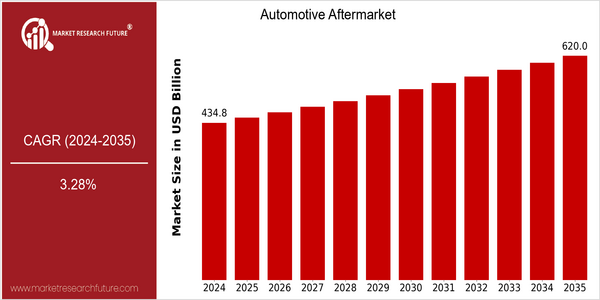
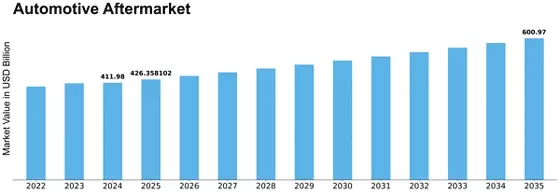

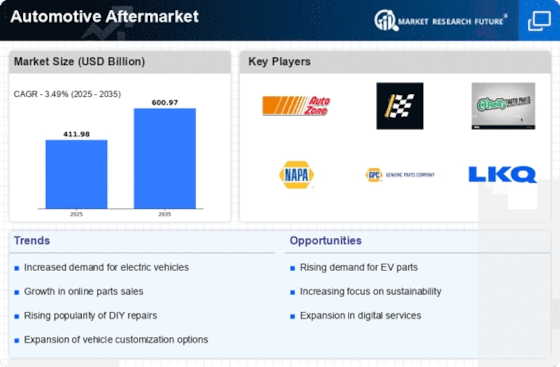
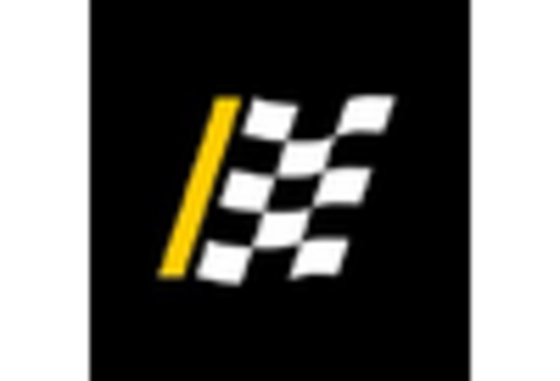
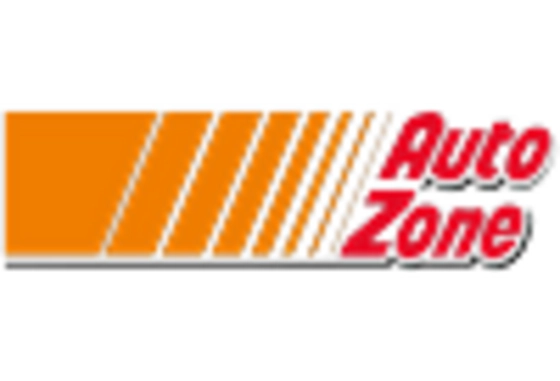
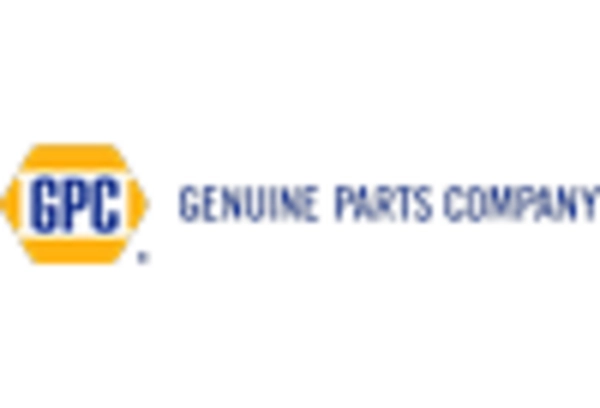
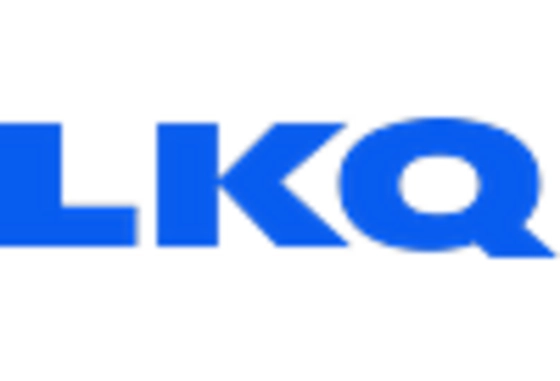
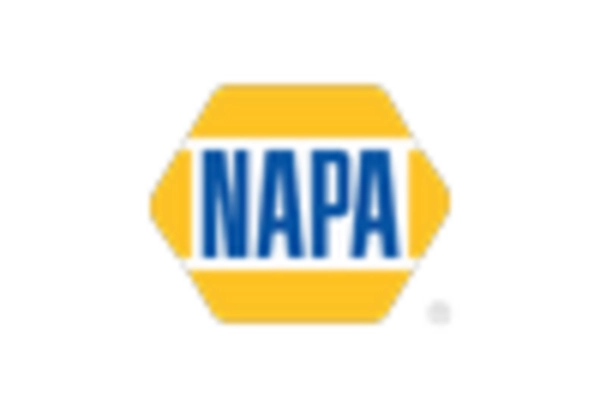


Leave a Comment